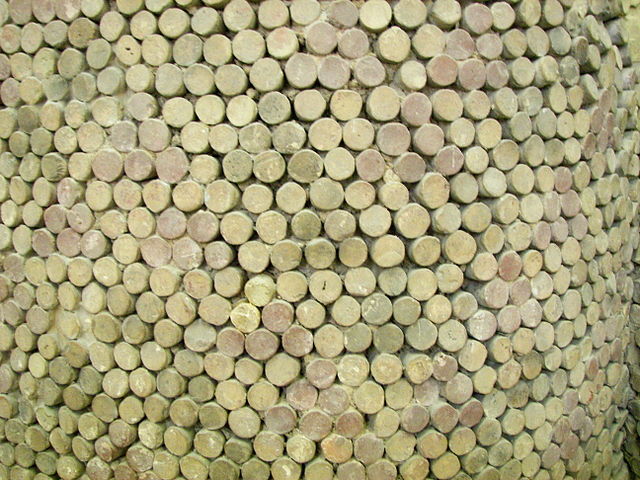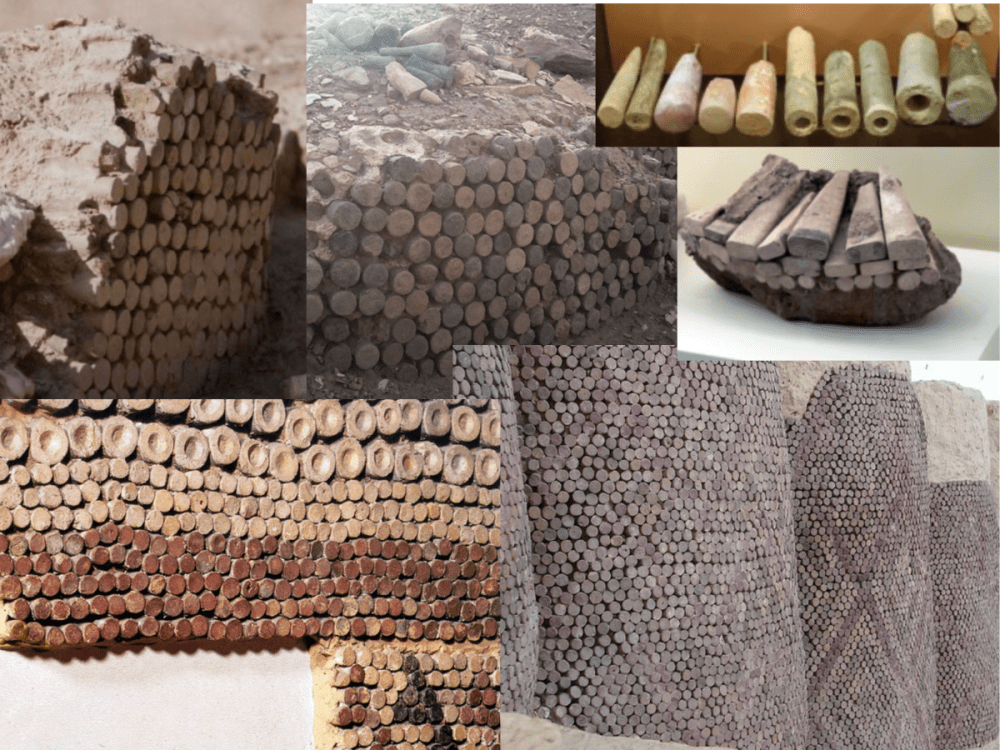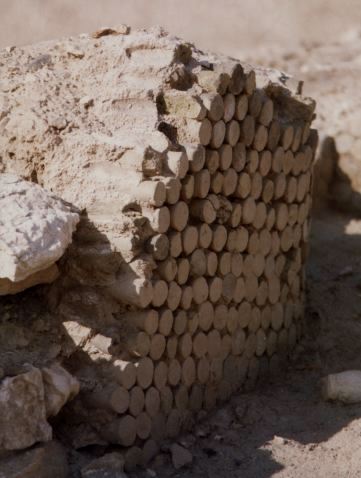The cone mosaics of Mesopotamia stand as a testament to the extraordinary craftsmanship of ancient builders, merging artistic beauty with practical functionality. This distinctive form of mosaic was created by pressing small clay cones into walls covered with a thick layer of wet plaster, with their pointed ends embedded inside the surface. The flat ends of these cones, protruding from the wall, were painted in vibrant colors such as black, red, and white, creating bold and striking visual patterns that are still admired today.
Origins and Discovery of Cone Mosaics
The cone mosaics originated in southern Mesopotamia during the second half of the fourth millennium BC, a period marked by the rise of powerful city-states and the development of complex architecture. These mosaics were primarily used to decorate monumental structures such as temples, palaces, and cultic buildings. Uruk, one of the earliest and most prominent cities of Mesopotamia, provides some of the most impressive examples of this mosaic technique. However, the technique was not confined to Uruk alone; similar mosaics have been discovered at other major Mesopotamian cities such as Ur, Eridu, and even at Habuba Kabira, an archaeological site located in modern-day Syria.

Artistic and Cultural Significance of the Patterns
The geometric patterns formed by these mosaics were not just visually striking but also carried deep cultural and symbolic meanings. The mosaics often featured shapes such as lozenges, triangles, and zigzag bands—geometric forms that may have been influenced by patterns found in wickerwork and textiles, which were common elements in daily Mesopotamian life. These designs went beyond mere decoration, representing a sophisticated aesthetic that reflected the cultural values and artistic traditions of the time.

The visual impact of these mosaics was intentional; they were designed to captivate the viewer and create a sense of grandeur and sacredness in the spaces they adorned. By using clay cones painted in vivid colors, these mosaics were able to produce striking visual contrasts that enhanced the overall architectural design of temples and palaces.
Functional Role in Architecture and Preservation
While the artistic merit of the cone mosaics is evident, their functional role in architecture cannot be overlooked. In addition to their decorative purpose, the mosaics were used to cover the outer walls and pillars of mud-brick buildings. Mud brick, while abundant in Mesopotamia, was prone to weathering from the elements, particularly wind and rain. The cone mosaics, made from harder materials, provided a protective layer that helped to preserve the integrity of these structures.

By covering vulnerable mud-brick surfaces with mosaic sheathing, the builders not only enhanced the aesthetic appeal of their monumental buildings but also extended their lifespan, allowing these structures to endure through the ages. This blend of art and function demonstrates the Mesopotamians’ advanced understanding of both aesthetics and engineering, as they sought to create durable and visually stunning buildings.
Legacy and Enduring Significance
The cone mosaics of Mesopotamia are a remarkable example of the ingenuity and skill of ancient builders. These mosaics were not just an expression of artistic talent but also a practical solution to the challenges posed by the harsh environmental conditions of the region. Their use in monumental architecture reflects the Mesopotamians’ deep appreciation for both beauty and durability.

Today, the cone mosaics stand as a lasting legacy of ancient Mesopotamian culture, continuing to captivate scholars and visitors alike. Their combination of vibrant design and functional purpose offers a unique glimpse into the daily life, beliefs, and architectural practices of one of the world’s earliest civilizations.

The mosaics remain an enduring symbol of the cultural richness and technological innovation that flourished in ancient Mesopotamia. From their role in preserving architecture to their artistic achievements, the cone mosaics provide a tangible connection to the past, reminding us of the ingenuity and vision of the ancient builders who created them.


